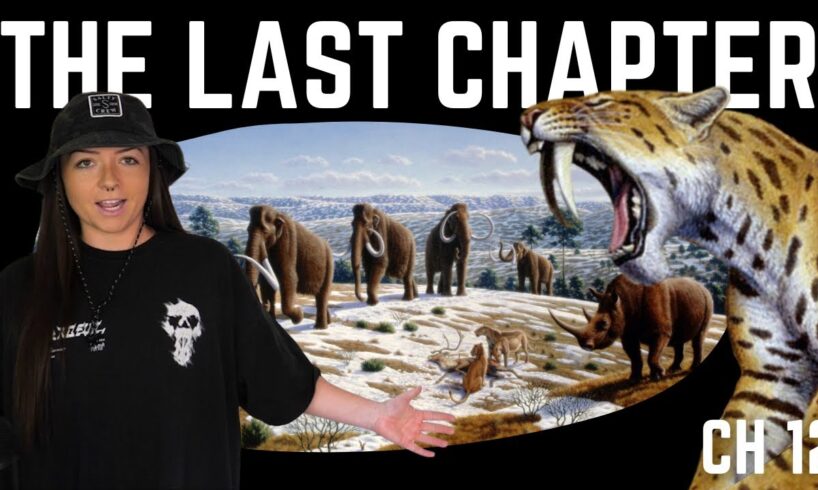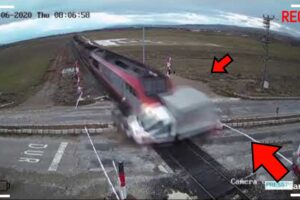
Support my channel by getting Fishing Clash on your iOS/Android device for free https://fishingclash.link/LindsayNikole! Use my gift code LINDSAY to get a $20 reward, and share your biggest catch in the pinned comment! Join Fishing Clash community to stay tuned about the latest news:
Instagram – /fishingclash_official
Facebook – /fishingclashcommunity
We have finally arrived at the Quaternary Period! The time of the ice age, the agricultural revolution, and so much more. Mammals were once again the stars of the show, and our lineage made some of the biggest moves in the History of Life on Earth (That We Know Of)!
Donate to Families Affected by the Wildfires: https://www.gofundme.com/c/act/wildfire-relief/california
Check out Milo here! : https://www.youtube.com/@miniminuteman773
A huge thanks to Gian for the fantastic editing!
Heidi’s Channel: https://www.youtube.com/@heidiheidilim
PATREON!!
https://www.patreon.com/lindsaynikole
Check out my Spooky Specimens Coloring Book here: https://a.co/d/8YCPRvh
Keep up with my daily content on:
TikTok: https://www.tiktok.com/@lindsaynikole
Instagram: https://www.instagram.com/lindsay_nikole/
And allll of my links here:
https://linktr.ee/smbah
Business Inquiries: mgmt@lindsaynikole.com
Send something to my P.O. box 🙂
Lindsay Nikole
3940 Laurel Canyon Blvd # 822
Studio City, CA 91604
“Bring Me Peace” Original Song: https://youtu.be/qdO6QG_s62g
source






Support my channel by getting Fishing Clash on your iOS/Android device for free https://fishingclash.link/LindsayNikole! Use my gift code LINDSAY to get a $20 reward, and share your biggest catch in the pinned comment! Join Fishing Clash community to stay tuned about the latest news:
Instagram – /fishingclash_official
Facebook – /fishingclashcommunity
YouTube needs a double thumbs up button 👍👍. Love the video/s
Last I heard the theory of a chimp giving one of out ancestors herpes has more evidence proving it to be homophobic propaganda than a possibility.
Am SO FUCKING JEALOUS of you, Linsdsay! I've visited the La Brea Tar Pits multiple times, but have never been invited backstage to see the labs!
As a kid me and my grandfather planted twenty thousand trees in about a week. Never thought of it as a big deal till Lindsay made a big deal about an entire organization doing only 60k.
I can't wait for part 13 of this series in 40~70000 years
THANK YOU FOR USING CE! And pronouncing Neanderthal correctly. Makes me happy. ❤
🥺🥺🥺🥺 didn't expect to be tearing up at the end of the video..
I'm from Brasil and coincidently I'm watching this at the same week I decided to go to a meeting to try and join a project called Teto Verde Favela, wich is the idea of creating green cielings of local flora to reduce the impact of heatwaves and heavy rains in slums from my city! ( and of course it ends up being a great preservation project, to have people caring for local flora gardens in their homes!
After all the shitshow we've been seeing lately on this side of the globe, these small things with potential to huge impacts are real saviors.
Thank you for the series and for this final message! 🤲💖 ( I'll be rewatching everything several times btw xD )
7:50 still nice 🤷🏽😂😂
Pvz music YAYAYAY
I don't know if this is already in the works, but if it isn't, I would LOVE to see a master binge video for the whole series. Mainly so I can send it to my friends when I'm yapping about it, but also just because a 480-minute video of some awesome paleontology would easily become my most watched video of all time.
I'm a big fan of the jumping around in this episode, it spoke to my ADHD, my brain loved it
Oh, shit, Lindsay showed a pic of Osage orange (6:20) when referencing some of the fruit mammoths ate! They're one of my favorite botanical oddities of temperate North America! I have to share this:
The Osage orange (Maclura pomifera) is a weird tree (or large shrub) with a really weird distribution pattern. First off, their modern native range is quite narrow, pretty much just the Red River watershed of east central Texas (with some in adjoining Oklahoma and Arkansas). However, the tree is a popular in landscape plantings, so you find it basically nationwide. The weird part about the tree, which is in the mulberry family (Moraceae) is it's ginormous fruit, meaning what looks like a huge, hard, yellow-green fruit the size of a softball is actually hundreds of individual fruits smushed together into a ball that looks a little like a bit orange (if an orange had a really terribly time of it). This kinds of fruit, called a multiple fruit, is common in the mulberry family and a mulberry fruit is a little more characteristic than Maclura.
When we study plants, one of the questions we ask is how does this plant spread it's seeds? This can be by wind (dandelions, cattails), water (a lot of aquatic plants), attached to animals (think of burrs that get caught in fur or clothing), or consumed and passed through the guts of animals (any brightly-colored, tasty fruit is usually like this). Well, our Osage orange is too heavy to fly, not aquatic enough to swim, and doesn't seem to have any known animal dispersers.
For a long time scientists assumed that Maclura had evolved this huge fruit (albeit, a grotty, latex-oozing fruit with dry, fibrous flesh and a bad smell) to be consumed by large mammals that had gone extinct at the end of the Pleistocene, such as ground sloths, mammoths, and mastodons. Without its megafaunal seed dispersers, the range of the tree had shrunk to a single drainage area. It's a great story, and one that Lindsay has clearly heard of (since she included the pic of the fruit when talking about mammoths eating fruit).
Unfortunately, there are some problems! First of all, It's been 12,000 years since most of the American megafauna went extinct. Trees are long-lived, but they can't wait out a loss of seed-dispersers for that long. Plus, why would the remaining native, wild Osage orange trees persist only in the Red River area?
Second, several experiments have been done to determine whether Maclura seeds can benefit from passing through the gut of modern large herbivores, namely horses and elephants. Most plants that use animal guts as a dispersal mechanism have very high germination rates after being deposited by the animal in their poop, usually due to a seed coating that protects the little plant embryo from the process of digestion. Some of these plant species actually have higher germination rates after being eaten by animals! Well, when elephants and horses were fed Osage orange fruits (which neither animal found all that tasty), germination rates were a disappointment. Horse digestion basically nuked the seeds and almost none germinated afterward. Some of the elephant-poop seeds germinated, but it was a major reduction in the rate. (The paper is titled "A test of potential Pleistocene mammal seed dispersal in anachronistic fruits using extant ecological and physiological analogs" by Boone et al. (Southeastern Naturalist, 2015) for those who want the citation.)
So what does this tell us? Well, since we think that most of the North American Pleistocene mega-herbivores had similar digestive systems to elephants and modern horses, it seems like mammoths, mastodons, and now-extinct American horse species were probably not the main dispersers of Maclura seeds. Other modern animals like squirrels and deer will nibble on the fruit, but not enough to spread the seeds. It's possible that other extinct megafauna were the dispersers, such as ground sloths. However, those ground sloths appear to have similar digestive styles to elephants and horses (hindgut fermentation, rather than the chambered stomachs, or "foreguts," of ruminant herbivores). We also have found a lot of different types of plant material in the fossilized sloth dung from the American Southwest, but none had any signs of Maclura.)
So the classic story of Osage oranges being the poor, lonely trees whose mammoth buddies went extinct is probably untrue, despite everyone in ecology and paleontology classes for decades learning the story.
tldr: I'm a botany professor, and I like weird plants
I've absolutely loved this series of videos! Thank you for all the work and research you've put into them! Great wrap-up. So excited for your next projects!
Thank you for ending on an encouraging note. I love your videos btw!!!!!
Gotta shout-out the spore music. Everytime i hear it makes me happy
Fun fact, the great Auk was actually refered to as "penguins" and the modern penguins were named that because they were thought to be closely related, which later turned out to be false, but by the time that was learned the false penguin had the name stuck in the popuar conciousness
Oh my gooooshhhh!! NZ'er here, and was very pleasently surprised to see not one but TWO local species. Been watching this whole series and was genuinely thinking you werent gonna mention but hey. Love to you, Lindsay! ❤
As a kid I would have panic attack about space and global warming and everything and now I find it fascinating, I still overthink and start to panic so I gotta distract myself but over the last year I’ve gotten to love earth and its past and humans and animals and space.
11:20 – most deer and elk die because it's to the cold nowadays… As the pendulum swings.
No, *u* R made of Carbon
Because Lindsays so.
gracias lindsey mi maraton favorita cuando estoy fumada son tus videos
A HISTORY ON RATS PLEASEEEE
WAAH!! the end of this made me tear up!! amazing, wonderful, incredible! job well done!!!!!!!!!!!!!!!!!
😂👍✊
I never felt as validated as the moment when you said "I hate that the plural of moose is just moose. I wish it was meese" because I've been advocating for this for years 👁👁 I also think sheep is outrageous and it should be one shoop, two sheep. This was an awesome series, I enjoyed it very much! Carried me through many hours of cleaning my kitchen and/or occupying my ADHD brain
i’ve never felt such positivity for the future, thank you
I really adored this series and it's so amazing that we can see so much of you as a person even though you're talking about something else 🥹 we love you Lindsay. Thank you for being our teacher 🤍
Hi I watch you on my playstation, so i will leave all my comments on your latest video
Video – idk you mentioned nano-tyrannus?
Napleon Bonoparte? Ammiwrong?
Once while fishing I protected a little beaver from some douche bros who were throwing rocks at it. They got bored and eventually wandered off, then my little beaver buddy swam off. I hope he had a good life. (I don't know a beavers lifespan, but this was between 13-15 years ago)
MILO! Woo!
An episode with Miniminuteman? The classic one two punch of good educational entertainment
Who doesn't want dragons to be real 😂🤔
Aaaaah, dream collab <3
Hi Lindsey Nikole. Cool Sam here. I have many cool questions. If I wanted to be featured. Id ask, Where can I get a squid pen. I wasn't totally paying attention but squid pens seem cool, even if they are nor a fossilized old squid spind that you could potentially load ink from bic pens into, and write with it. My question still stands, where do i buy? Where would Lindsey Nikole buy a squid pen? Your vibes are guddcci
Well, that ending made me shed real honest to goodness tears.
I’ve learned a lot, these videos have gotten me through some hard shit, and I sincerely hope that Lindsay knows how special her talent is.
Thank you for the hope, I think we can all use it right now. ❤
15:15 I’m pretty sure they where found in the same cave and at first they thought they where siblings but then later found out that they were not because of the few thousand year gap
40:09 IS THAT REALLLL🐘
Hi Lindsay,
What you said at the end really resonated with me. For the longest time I thought that hating humanity was the only way to feel right about the state of the world. But a couple of years ago I realised that hating humanity means that I hate myself. Nothing good will come from it. So I choose to believe in my potential, in humanity’s potential. So we have to try, it may turn to shit anyway, but at least we tried.
I actually screamed when I saw Milo walking up 😂 I love it when my two favorite YouTubers team up
11:27 Huh! Nice! AVGN reference!
I'd love it if they would de-extinct the tasmanian tiger.
I was feeling pretty defeated today. This video was exactly what I needed. Animal facts and hope. Thanks Lindsay!
That last bit genuinely made me tear up. Lindsay, I really appreciate your message and I hope you know that you actually changed my mindset today. Low key, I didn’t know how badly I needed that, so yeah. Just thanks.
I feel at this point we could call these bones as well as fossils.
every third time you say it, still too many; I'll just listen, now 😊
Oh…. im sorry, I didnt know you went to Oregon State… Quack
Thanks, Lindsay, for fueling my autistic hyperfixation